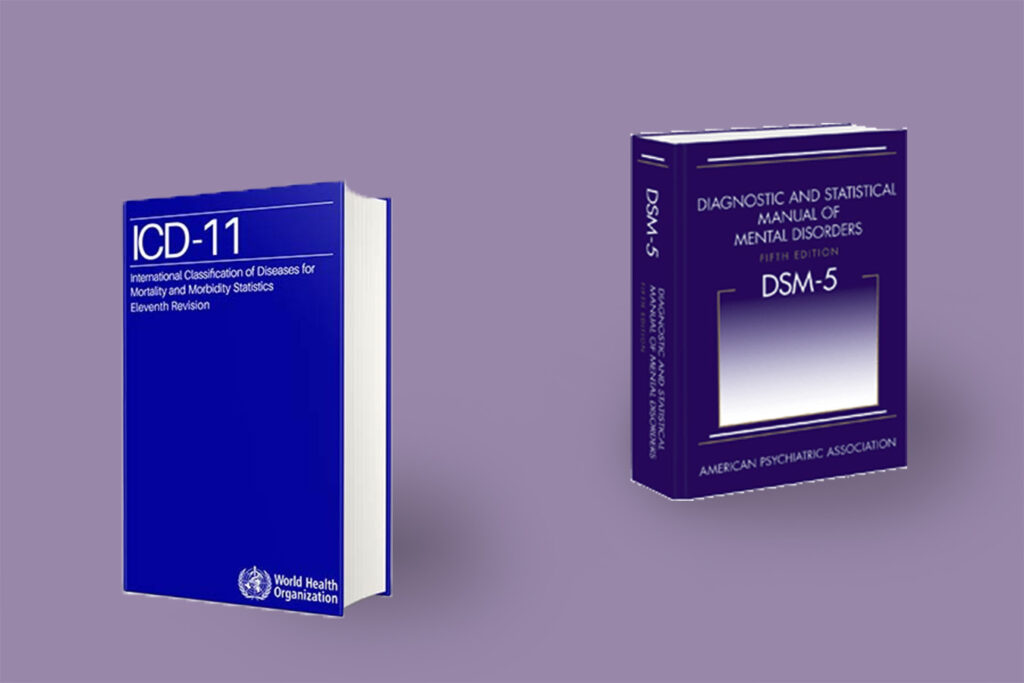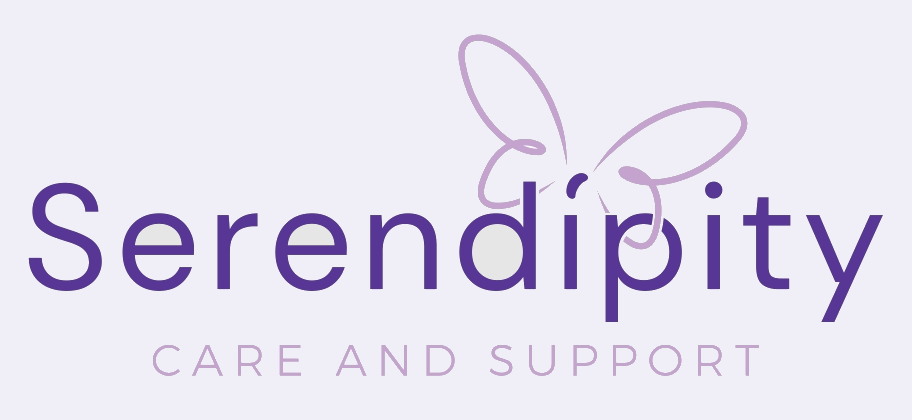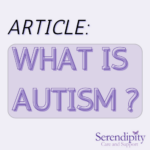What is Autism?
Autism 101
This article seeks to increase awareness and understanding around what is now called “Autism Spectrum Disorder”, or ASD. The technical side of this topic is fascinating, but it’s not always the best way to have a subject resonate with us. We’ll save that for another time. Luckily there are so many individuals nowadays who have the platform to share their experiences with many different disorders, ASD being one of them.

One of our writers, who has ASD and is a parent to a child with ASD, brings a unique viewpoint to this complex topic. By combining personal experience with a technical definition which we’ll take from the DSM-5 and the ICD-11, we hope to offer a brief overview of what ASD is, what it can look like and how it can affect those who have it.
Defining Autism Spectrum Disorder
The DSM-5 (The Diagnostic and Statistical Manual of Mental Disorders 5th Revision) and the ICD-11 (International Classification of Diseases 11th Revision) are developed by the American Psychiatric Association and the World Health Organisation respectively, and they share a very similar definition.

For our purposes we will define Autism Spectrum Disorder as:
“Characterised by persistent difficulties in social communication and interaction, as well as restricted and repetitive behaviours, interests, or activities that impair everyday functioning and are atypical or excessive.”
This definition is precise, but it’s also a little abstract. To make it more relatable, let’s explore the commonalities and differences between individuals with and without ASD.
How We Differ as Individuals
It’s important to remember that we all have the same basic needs, in that way we are all similar. We’re all essentially trying to minimise suffering and maximise wellbeing.
Equally important is understanding how we differ. We couldn’t list all the ways that we differ if we tried. Including the different ways we might seek to achieve those ends.
Relevant to our topic though, are the different ways in which we perceive, relate to and interact with the world around us. What we might call our “sensory and social processing”. This is key to understanding individuals with ASD.
The Museum Analogy
To give an example, let’s imagine you’re walking through a museum. You’re wearing a jumper and as you walk into the next room, you notice it’s a lot warmer than the previous room. You’ve just perceived a change in temperature. You relate to that change in temperature by thinking “I’m too warm now, I should remove my jumper” and you interact by removing your jumper.

That’s how a typical person might experience that situation. An individual on the spectrum might not even notice until they’re sweating and someone asks them if they’re alright. On the other hand it may have only been a temperature change of one degree that required them to take their jumper off.
This is just one example of how differently we can experience the same objective conditions present in one situation. It also foreshadows a later topic; Sensory Processing Disorder, almost always associated with ASD.
We may all have slightly different sensory and social processing characteristics, (you might have found the increase in temperature to be just to your liking) but in the case of the autistic individual, the difference is more extreme, atypical and not merely a preference for warmer climates.
Persistent Difficulties in Social Communication and Interaction
Perceiving, relating to and interacting with people is where we step into the first part of our definition
At some level we all have some difficulties with social communication and interaction. It certainly doesn’t come naturally to all of us. Even those who are extroverted can have issues with this, just in different ways.
While it’s true that challenges in social communication and interaction are part of the human experience, those with ASD often encounter unique difficulties in these areas.
These challenges are not solely due to a lack of knowledge about social norms and behaviours. Instead, individuals with ASD may process and respond to social information entirely differently, which can impact their ability to apply social concepts in real-time interactions.
Some examples of social difficulties that individuals with ASD can experience are, but are not limited to:
- Challenges with Nonverbal Communication: This can include difficulty interpreting body language, facial expressions, and gestures, leading to misunderstandings in social contexts.
Non verbal communication is an integral part of how we humans interact with each other. Especially when subtlety is required, you might indicate something to someone by tilting your head, making a subtle facial expression, widening your eyes, etc. This might lead someone on the spectrum to say “Why are you doing that with your face?”. - Taking Things Literally: Individuals with ASD may have a hard time understanding sarcasm, idioms, or figurative language, leading them to interpret statements very literally.
Sarcasm for example is often used as a form of expression that, when understood, can strengthen social bonds. It relies on mutual trust that the intended humour will be appreciated rather than taken as an offence. Humour is an important factor in building connections.
This makes it difficult for individuals with ASD. They very genuinely may not understand when something is being said literally, figuratively or with sarcasm. It can lead to confusion and asking questions, which disrupts the natural flow of an interaction. - Restricted Interests and Conversational Challenges: Individuals with ASD may have intensely focused interests and might predominantly talk about these interests, sometimes at the expense of mutual exchange or recognizing the interests of others.
This is not an exhaustive list, we will write in more detail about this in future articles. But the last point about restricted interest leads nicely into the second part of our definition.
Restricted and Repetitive Behaviours, Interests, or Activities
Much of what we’ve discussed so far have been things that most of us can relate to on some level. It’s not uncommon for neurotypical individuals to miss a joke, or to get carried away talking about an interest. What makes those with ASD different is again the persistence and severity of these difficulties.
Restricted and Repetitive Behaviours, Interests, or Activities (RRBIA) are core features of Autism Spectrum Disorder, characterised by a notable repetition of actions, an intense focus on specific interests, and a strong preference for sameness and routines. Some examples:
- A Strong Need for Routine and Sameness: You might have heard “variety is the spice of life”, for many of us that’s true. For individuals with ASD however, there’s profound comfort and security in routine and predictability. Even minor changes can be unsettling, leading to distress. The predictability of routines offers an anchor in the overwhelming sea of sensory and social information.
- Deep Dives into Special Interests: Individuals with ASD often have specialised interests pursued with remarkable intensity and focus. These interests provide not only joy and satisfaction but also a unique lens through which they relate to others and the world. These special interests can become sources of expertise and pride, but they can sometimes overshadow opportunities for broader social exchanges.
To give one example, one of our writers’ children is currently obsessed with Pokémon. Not uncommon for a child of 5. What is slightly unusual is the greeting of people with Pokémon noises with no context, as if they understand what he’s doing. Crawling around like a Pokémon in non-play type settings, and pretending to engage in Pokémon battles, again without any context. Which just appears as if he’s attacking his peers unprovoked. - Repetitive Behaviours: “Stimming”, or self-stimulatory behaviour, like hand-flapping, rocking, or repeating phrases, might seem unusual on the surface. However in the case of ASD these aren’t voluntary behaviours. They’re actually serving multiple purposes from self-soothing to expressing joy and they’re important for self-regulation.
It’s likely that this is because it provides predictable and controllable stimuli that can provide comfort in an unpredictable or out of control situation.

The underpinnings of RRBIA and Persistent Difficulties in Social Communication and Interaction, are thought to be related to differences in brain structure and function, including variations in neural connectivity and sensory processing. From a neuro-developmental perspective, RRBIA are reflective of the brain’s attempt to regulate sensory input and create predictability and order in the environment.
Impair Everyday Functioning and are Atypical or Excessive
When we combine the first two factors in our definition, it becomes clear that there are many combinations of sensory and social processing issues that can arise. If we consider our earlier statement, that we’re all just trying to maximise wellbeing and minimise suffering, we see that unfortunately there are many pitfalls for ASD individuals while trying to achieve this optimal state.
We didn’t have time to go into Sensory Processing Disorder, which is almost always accompanying ASD. It makes the world a far more volatile space for ASD individuals. When taken with the first two factors we looked into, we can conclude that the everyday functioning of individuals with ASD is impaired, completing this deep dive into our definition.
Conclusion
Stimming, Sensory Processing Disorder, Sensory Burnout, Meltdowns, Masking, Shutdowns. These are only a few things that we could write full articles about to do with ASD. And we will!
For now though, it’s important to understand that ASD is not simply a few quirky behaviours or a clearly defined list of symptoms. It is an entirely different way of perceiving, relating to and interacting with people and the environments around us.
Crucial to understanding ASD fully is that it is a spectrum disorder. That means individuals with ASD are going to vary in their level of severity and combinations of characteristics. It certainly adds to the complexity of understanding this topic. Adding to the complexity is the crossover of characteristics between other conditions such as ADHD and OCD.
Autism Spectrum Disorder may sometimes be difficult to relate to and understand deeply, even for those closest to those individuals who have it. But with patience, understanding and education we can get closer to relating to our ASD friends and other neurodivergent individuals.

